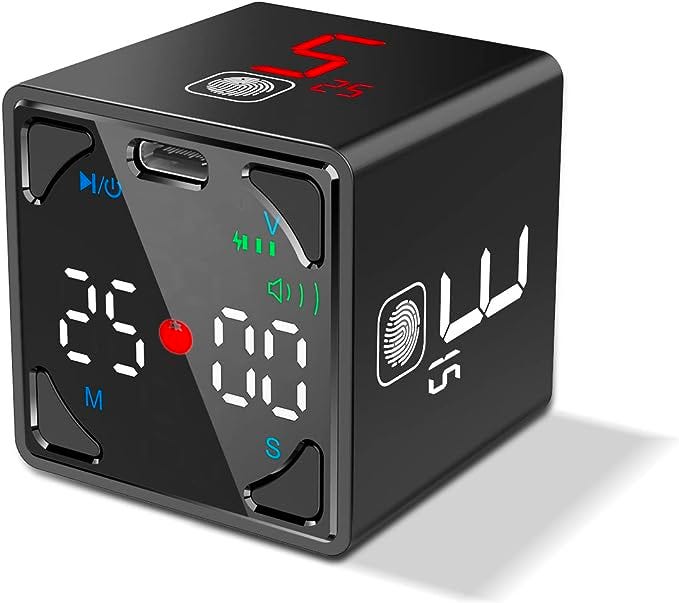

25 MIN TIMER POMODORO SOFTWARE
Paymo Pomodoro (Mac, Windows, Linux)īest for: using the Pomodoro technique right within a project management software To automate the system and customize it to fit your workflow in terms of session lengths, ticking sounds, alerts, and so on, try out these Pomodoro apps: 1. This doesn’t give you enough insight into timesheets, the nature of your interruptions, or how you progress on each task. Best Pomodoro apps to try outīecause of the method’s simplicity, you only need a kitchen timer and a notebook or piece of paper to keep track of your pomodoros. This is exactly what the Pomodoro Technique intends: break work into manageable chunks to keep your mind sharp and ready. These two fluctuating states trick you into thinking you can “make” more time for yourself.
25 MIN TIMER POMODORO UPDATE
The most recent update was in July 2023.Ever caught procrastinating in the morning, only to feel overwhelmed at the end of the day? This article was originally published in April 2019 by Jessica Greene. How I front-load my workweek to increase productivity Productivity tools to check out, according to a software expert How I increased productivity by tracking my mental health But if you write about it so others can use it, please don't call it PomoFlowTime. If that's what works for you, that's great. Perhaps the best solution for you is a blend: a sort of PomoFlowTime where you use timers to help you tackle the tasks you hate, but ditch when you're feeling inspired. Maybe neither technique-Pomodoro or Flowtime-is right for you. Instead, it's to help you discover new ways to stay focused, prioritize tasks in your to-do list, and get things done- even when you don't want to. The purpose of a productivity strategy isn't to box you into a strict set of rules. Choose the productivity strategy that's right for you Tip: Not sure which time-tracking software to use? Here's a roundup of the best time tracking apps for individuals and small teams. Then you can use that data to tweak the Pomodoro intervals, ensuring you take regular breaks throughout the day without impacting your flow-state potential. If the more structured Pomodoro method works better for you, experiment with the Flowtime Technique for a few weeks to understand what time blocks generally work for you. Or, if you work in different locations, spaces where you get the most work done.Ĭreate a personalized time-management strategy. Your time-tracking data can also help you identify times of the day when you're most focused. Tracking this data can help you discover your biggest sources of distraction so you can take steps to eliminate them. Read-Bivens suggests tracking activities that pull your attention away from the task at hand (e.g., texts, social media scrolling, and desk drop-bys). This way, you can create data-informed estimates for how long future tasks will take. Since you're documenting start and end times for each task, you can use your Flowmodoro data to understand how much time it takes you to complete different types of tasks. Take the guesswork out of scheduling your workday. While the primary benefit of using the Flowmodoro Technique is that it allows you to achieve a flow state from time to time, there are other benefits to using this approach. This way, you increase the frequency of your breaks while building an understanding of how long you can work before feeling fatigued. As Read-Bivens puts it, "Refreshed work is orders of magnitude better than fatigued work."Īnd if you, like me, easily get sucked into extended periods of deep work and only come up for air when you've hit your beyond-exhausted point, here's how you can mitigate this: pick smaller tasks to focus on. If you need more time to recharge, that's fine. It's worth mentioning that these suggestions are simply that-suggestions. There's no set time for how long your break should be, but here's what Read-Bivens suggests:įor 25 minutes of work or less, take a five-minute break.įor 25–50 minutes of work, take an eight-minute break.įor 50–90 minutes of work, take a 10-minute break.įor more than 90 minutes of work, take a 15-minute break.

Once you do, note the time (this is your end time), and take a break. Keep working until you start feeling tired or distracted. Once you've picked your task, start working on it, but note the time you began working. Similar to Pomodoro, you pick one task to focus on during a session. You're still breaking your day into working periods, but instead of time-blocking, Flowtime allows you to fully immerse yourself in a task and take much-needed breaks at a natural stopping point. The Flowtime Technique was created by Zoë Read-Bivens as a solution to Pomodoro's main problem.


 0 kommentar(er)
0 kommentar(er)
